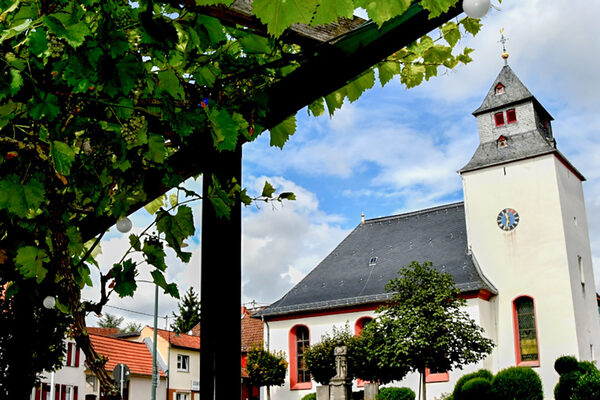Breckenheim: An der Römerstraße
Breckenheim has a long and eventful history dating back to the earliest settlement of the region.
Early history and Roman times
The region around Breckenheim has been inhabited for around 6,000 years. Archaeological finds document settlements from the Palaeolithic Age. The Romans also left their mark: a Roman road led from Wiesbaden via Bierstadt and Breckenheim to Hofheim, indicating the strategic importance of the area.
First mention in the early Middle Ages
The first written mention of Breckenheim can be found in a document from 950, when King Otto I gave his vassal Gerung several estates, including Breckenheim. At this time, the village was not yet a closed settlement, but consisted of individual farms.
In the Middle Ages and early modern times, Breckenheim was repeatedly destroyed. The village was hit particularly hard during the Thirty Years' War, and the church was also severely damaged.
Historical milestones
Breckenheim was briefly the official seat in 1776 before it was moved to Wallau. In 1803, Breckenheim passed to Nassau-Usingen and later to the Duchy of Nassau. During the Nassau period, the first roads were built in the town between 1831 and 1836. However, this development ended in 1866 with the annexation by Prussia.
Under Prussian rule, Breckenheim belonged to the district of Wiesbaden in the administrative district of Hesse-Nassau. In 1928, the district of Wiesbaden was dissolved and Breckenheim became part of the Main-Taunus district with its administrative seat in Frankfurt-Höchst. The desire for incorporation into Wiesbaden remained unfulfilled as the Prussian government refused.
War years and reconstruction
Breckenheim was spared major destruction during the Second World War. The construction of the freeway between 1936 and 1939 divided the district and the plots were reorganized. After the end of the war, a large number of refugee families moved to Breckenheim, which led to a considerable housing shortage. However, this was successfully overcome in the early 1950s thanks to intensive housing construction.
Changing employment structure
Breckenheim remained a farming village until the 1950s, but farming was no longer the main occupation. More and more Breckenheim residents turned to the tailoring and building trades. Around the turn of the century in particular, Breckenheim became an important center for craftsmen in the "Ländchen". The expansion of Wiesbaden and industrialization offered additional job opportunities.
Modern and rural at the same time
In the 1960s, Breckenheim experienced strong growth thanks to its good location between Wiesbaden, Mainz and Frankfurt as well as favorable land prices. New building areas were created and the infrastructure was expanded. Breckenheim was incorporated into Wiesbaden in 1977, but retained its village charm.
Historical highlight
In 1779, the first seal of the Breckenheim court appeared with the archangel Michael as its symbol.
